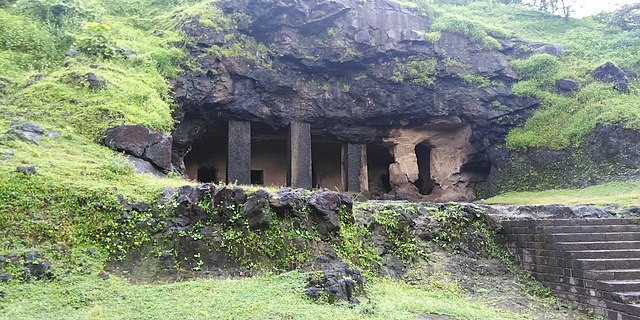Welcome to the mystical world of Elephanta Caves, an ancient wonder nestled on Elephanta Island in the Arabian Sea. These mesmerizing caves are not just a collection of rock-cut structures; they are a testament to India’s rich history and artistic heritage.
Historical Background
Dating back to the 5th to 8th centuries, Elephanta Caves represent a significant era in Indian history. Carved during the rule of various dynasties, including the Chalukyas and Rashtrakutas, the caves showcase a blend of Hindu and Buddhist influences in their architecture and art.
Architectural Marvels
The layout of Elephanta Caves consists of a network of sculpted caves, each dedicated to a different deity. The rock-cut sculptures within these caves are awe-inspiring, depicting intricate details of various gods and goddesses. The grandeur of these sculptures reflects the skilled craftsmanship of ancient Indian artisans.
Symbolism in Art
The sculptures at Elephanta Caves are laden with symbolism, telling stories of Hindu mythology. From the iconic Trimurti sculpture depicting Brahma, Vishnu, and Shiva to the intricate detailing of various deities, every carving carries profound meaning and cultural significance.
Discovery and Restoration
Lost to the world for centuries, Elephanta Caves were rediscovered by the Portuguese in the 16th century. Since then, concerted efforts have been made to restore and preserve this cultural gem, ensuring that future generations can marvel at its beauty.
Visitor Experience
Today, Elephanta Caves attract tourists from around the globe. Accessible by a short ferry ride from Mumbai, the caves offer a captivating journey into India’s ancient past. Highlights include the colossal Trimurti sculpture and the Cave 2 panel depicting Shiva’s cosmic dance, captivating visitors with their timeless beauty.
Challenges in Preservation
Despite conservation efforts, Elephanta Caves face challenges from environmental factors such as humidity, salt, and pollution. Ongoing initiatives aim to strike a balance between preserving the site and allowing visitors to experience its magic.
Myths and Legends
Elephanta Caves are steeped in myths and legends, adding to their mystique. Local folklore and stories associated with the caves contribute to the spiritual aura surrounding this historical site.
Influence on Modern Art
The impact of Elephanta Caves extends beyond its historical context, influencing contemporary artists globally. The timeless beauty and spiritual essence of the sculptures continue to inspire modern-day creators in various artistic endeavors.
Cultural Festivals and Events
The caves serve as a backdrop for cultural festivals and events, celebrating the rich heritage of India. These occasions not only attract tourists but also foster a sense of community and cultural pride among the locals.
Photography and Media Presence
Visual media plays a crucial role in showcasing Elephanta Caves to the world. Iconic photographs and documentaries have brought the site’s grandeur to a global audience, sparking interest and admiration.
Future Prospects
As we look ahead, plans for further preservation and promotion of Elephanta Caves are underway. Initiatives aim to enhance the visitor experience while ensuring the site’s longevity for generations to come.
Comparisons with Other Cave Sites
While Elephanta Caves share similarities with other rock-cut structures, each site has its unique features. Comparisons provide insights into the diverse cultural and architectural landscape of ancient civilizations.
Educational Significance
Elephanta Caves play a vital role in education, serving as a living history lesson for students and researchers alike. Academic studies contribute to a deeper understanding of India’s cultural evolution and artistic achievements.
Conclusion
Elephanta Caves stand as a testament to India’s rich cultural tapestry and artistic prowess. As you explore the intricacies of these ancient wonders, you embark on a journey through time, connecting with the spirituality and creativity of generations past.
FAQs
Is photography permitted within the premises?
Yes, photography is allowed, but flash photography is prohibited to preserve the sculptures.
Are guided tours offered for visitors at the site?
Yes, guided tours by knowledgeable experts are available for a more informative experience.
How much time is typically needed for a thorough exploration of the site?
A thorough exploration usually takes around 2 to 3 hours, including the ferry ride.
Can I explore the site during the monsoon season?
It’s advisable to check weather conditions, as heavy rainfall may affect ferry services.
Are there any restrictions regarding entry to the site?
Certain areas may have restricted access for preservation purposes; visitors are urged to follow guidelines.
When is the best time to explore the captivating wonders carved in stone on Elephanta Island?
The ideal time to visit is during the winter months (November to February) when the weather is pleasant.
Is there an entry fee for Elephanta Caves?
Absolutely! There is a nominal entrance fee for both Indian and international visitors. Kindly consult the official website for the latest and accurate pricing details.
Are there facilities for differently-abled visitors at Elephanta Caves?
Efforts have been made to make the site accessible, but due to the rocky terrain, some areas may be challenging for those with mobility issues.
Can I bring food and drinks inside Elephanta Caves?
Outside food is not allowed inside the caves, but there are designated areas for picnics near the entrance.
Are there educational programs for schools at Elephanta Caves?
Yes, educational programs and workshops are available for school groups to enhance the learning experience.
Can I purchase souvenirs at Elephanta Caves?
Yes, there are souvenir shops near the entrance where visitors can purchase artifacts and memorabilia.
Are there restrooms and drinking water facilities inside the caves?
Yes, there are restroom facilities, and drinking water is available to ensure a comfortable visit.
Can I explore Elephanta Caves independently, or do I need a guide?
While independent exploration is possible, hiring a guide is recommended for a deeper understanding of the historical and cultural significance.


